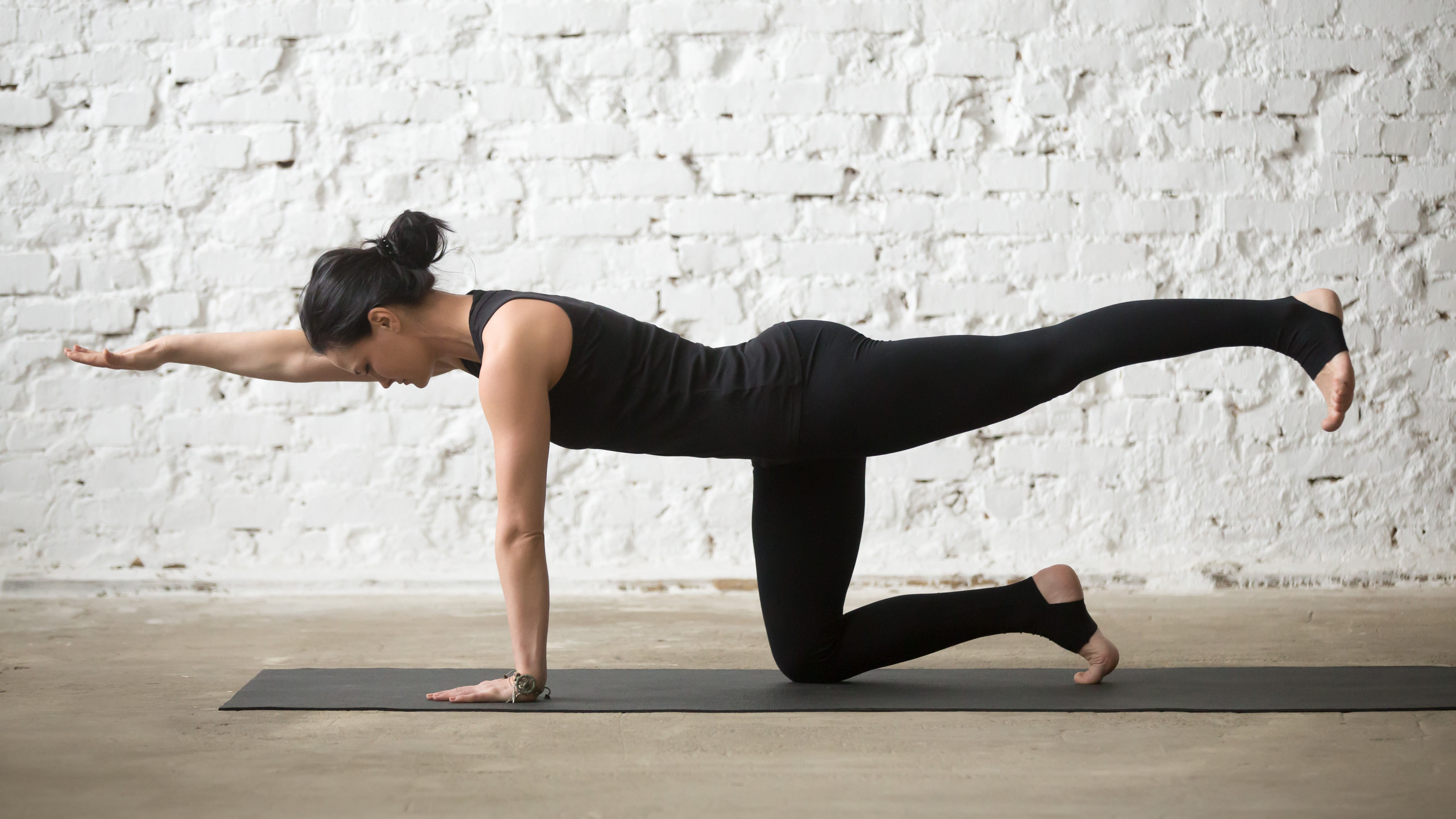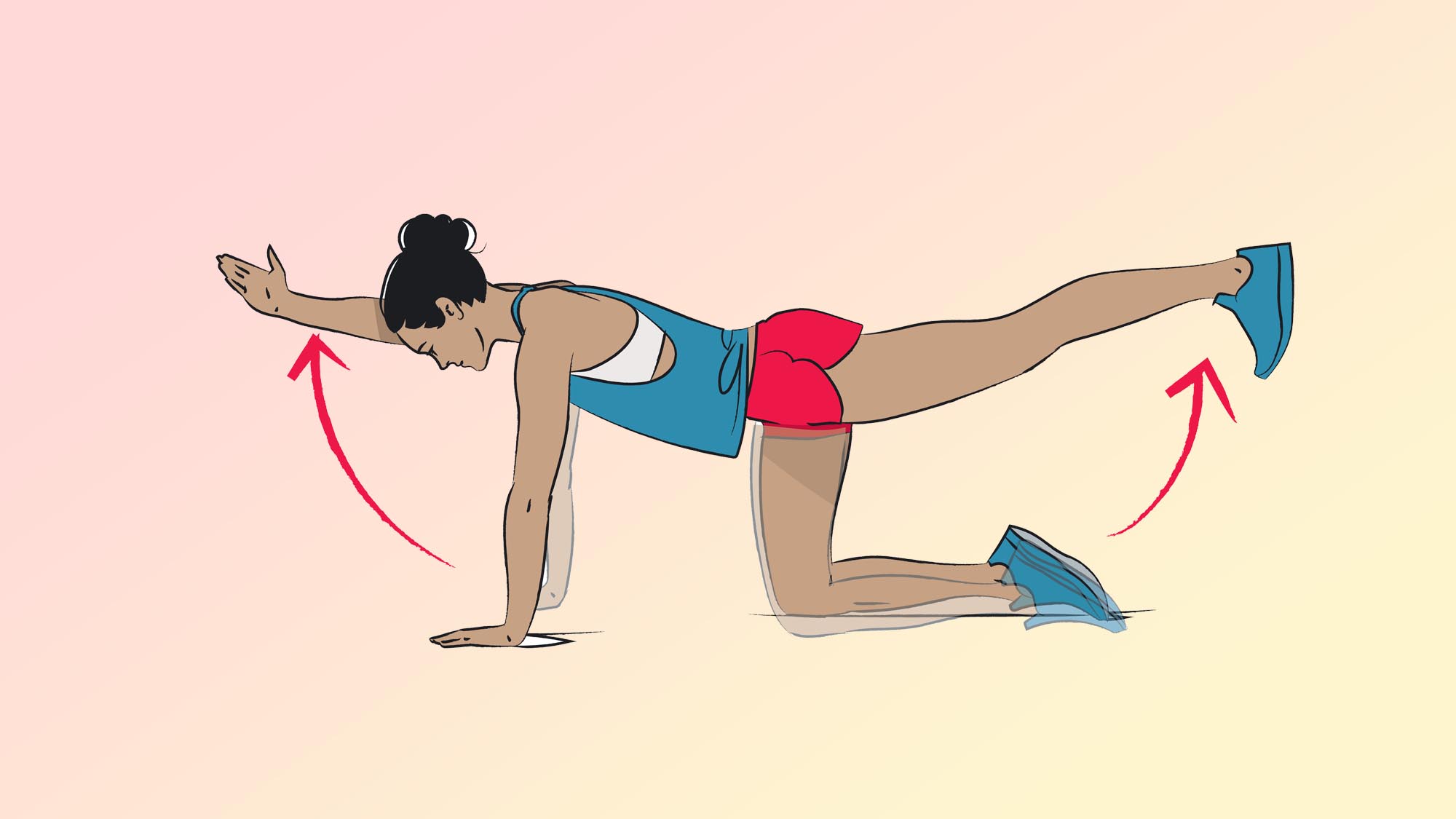I did 50 bird dogs a day for a week — and the results surprised me
If you want a move that works a lot of muscles at once, this could be the one for you

This is the second week-long exercise I’ve done recently that is named for a position a dog adopts. This one refers to the still, intensely focused stance a bird dog such as a pointer will take when it has located game – muzzle forward, leg raised. The other was the fire hydrant, which shouldn’t need an explanation.
Oh, OK: Ask yourself, what does a dog tend to do when it comes across a fire hydrant? Any fire hydrant? Even if he has passed a fire hydrant two minutes earlier. There you go. (Read what happened when I did 100 fire hydrants a day for a week here.)
The bird dog is also known as the quadruped, which is not quite right, as we lucky humans don’t have four feet. Read on to learn more about the exercise, its benefits, and what happened when I added it to my routine for a week.
What is a bird dog?
The bird dog is essentially a core exercise, but it’s a sneaky one, in that it works a range of muscles, including the erector spinae, which extend from the neck along the full length of the spine; the glutes; and the rectus abdominis muscles, the muscles we are talking about when we refer to the ‘six-pack’. In addition, it works the hamstrings, the trapezius muscles in your upper back, and the deltoid muscles, which form the rounded shape of the shoulder.
The move also improves overall stability and can help relieve lower back pain, one of the most common types of pain in adults. In short, the bird dog is a remarkably wide-ranging exercise that requires no more equipment than a mat (make sure it’s a good one; this can be murder on the knees).

How to do a bird dog
- Begin on your hands and knees, in what is known as tabletop position — wrists directly in line with your shoulders and knees in line with your hips
- From here, extend your left arm straight ahead and your right leg behind you. Engage your core and concentrate on maintaining a flat back. You should be looking down at the floor.
- Hold the position briefly, then return to the starting position. This is one rep.
- Start off with 10 reps, then repeat the move with the other arm and leg. Do two more sets on each side.
I did 50 bird dogs for a week — here’s what happened
Day one
On day one, I was, as usual, fixated on my form. There is a lot more going on in this move than you might think, so be patient. I found the knee of my balancing leg (the one on the floor) tended to slide in under my torso to give extra support. This meant my hip was turning, so I had to work to avoid this. Also, you may find your hip rocking back a little to make the move easier. Watch out for this and correct it. The aim is to create a straight line with your body.
I did 25 on each side, with some difficulty, and noticed the effects in my glutes and along my back as I did the move, but I had no lasting sense of having done an exercise. This surprised me, as I had not done the bird dog in the past. Usually, when I try something for the first time, the physical effect remains for a while. I enjoy this confirmation of effort.
Get instant access to breaking news, the hottest reviews, great deals and helpful tips.
Day two
On day two, I again felt the move in my glutes, but much less so along my back. I imagine some people will find themselves wondering if their raised leg is extended straight out. Think about driving it towards a wall behind you. But don’t lift it too high, as this puts pressure on your lower back.
Day three
By day three, I had nailed the form (as far as I could tell) and was feeling an overall sense of being challenged while performing the move. This is good in one sense, as it means one move is doing a lot. But — and this may be a purely personal reaction — because I wasn’t feeling it anywhere in particular, it was leaving me vaguely dissatisfied. Some of the other week-long challenges have targeted particular muscles and I’d feel it for the rest of the day. This was not the case with the bird dog. That said, the move is designed to work a wide range of muscles without causing undue fatigue, and, indeed, it is a popular rehab exercise for this very reason.
Day four
On day four I began to hold the move for longer, up to five seconds. This was hard. I could feel some general muscle trembling as I worked to maintain form. Doing 25 on each side may not have been the wisest choice. I recommend doing two or three sets of fewer reps for maximum impact.
Day five
By day five I was looking forward to day seven — I confess this was not an exercise I looked forward to. I usually love these challenges, as they keep me working in a variety of ways, but this one was a bit of a chore. I’m sure one of the reasons — perhaps the main one — is that I found it quite uncomfortable on my right wrist, which I broke a long time ago and still carry the (literal) scars from subsequent operations.
Days six and seven
For days six and seven, I refocused. I owed the move that much. And you, dear reader. You need to concentrate to do the bird dog properly. And do it slowly and smoothly for maximum effect. I have added some of my challenges to my daily exercise regimen, but I don’t think I will be continuing with the bird dog. There is no doubt that it is a good exercise, one that works many muscles, but I prefer more targeted moves that leave me with a reminder in the form of a slight ache, which makes me feel both healthy and — whisper it — smug.
More from Tom's Guide
- I did 50 Russian twists every day for a week — here’s what happened
- I did resistance band clamshells every day for a week
- Here's what 30 minutes on an exercise bike can do to your body
John is a writer and editor based in London. He was worked for magazines such as Runner’s World, Men’s Health, Women’s Health and Cosmopolitan. A keen runner, what he lacks in ability he makes up for with enthusiasm and excuses.

